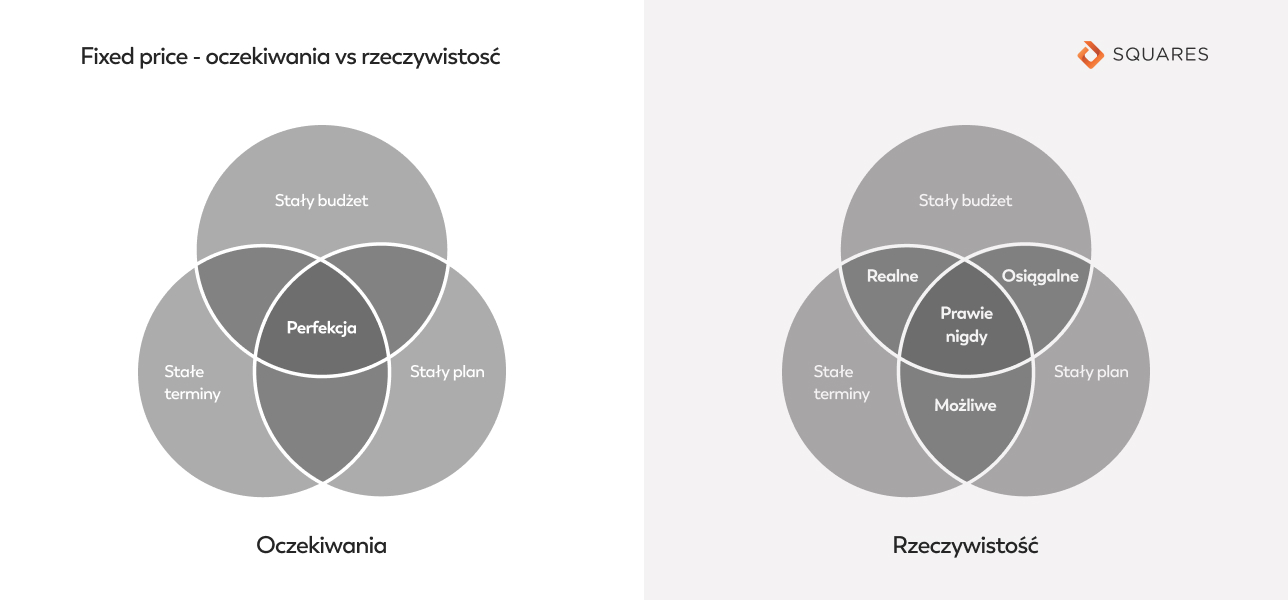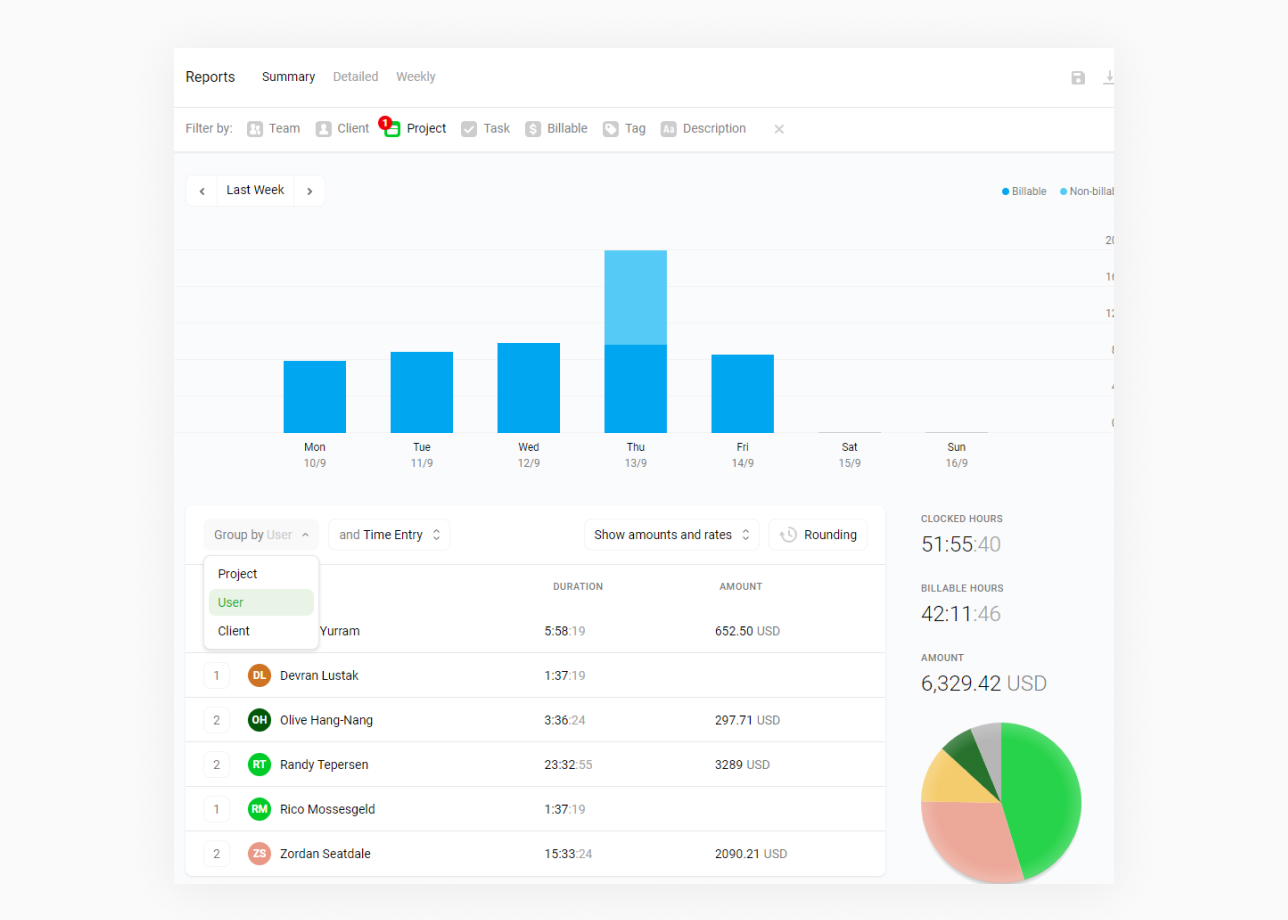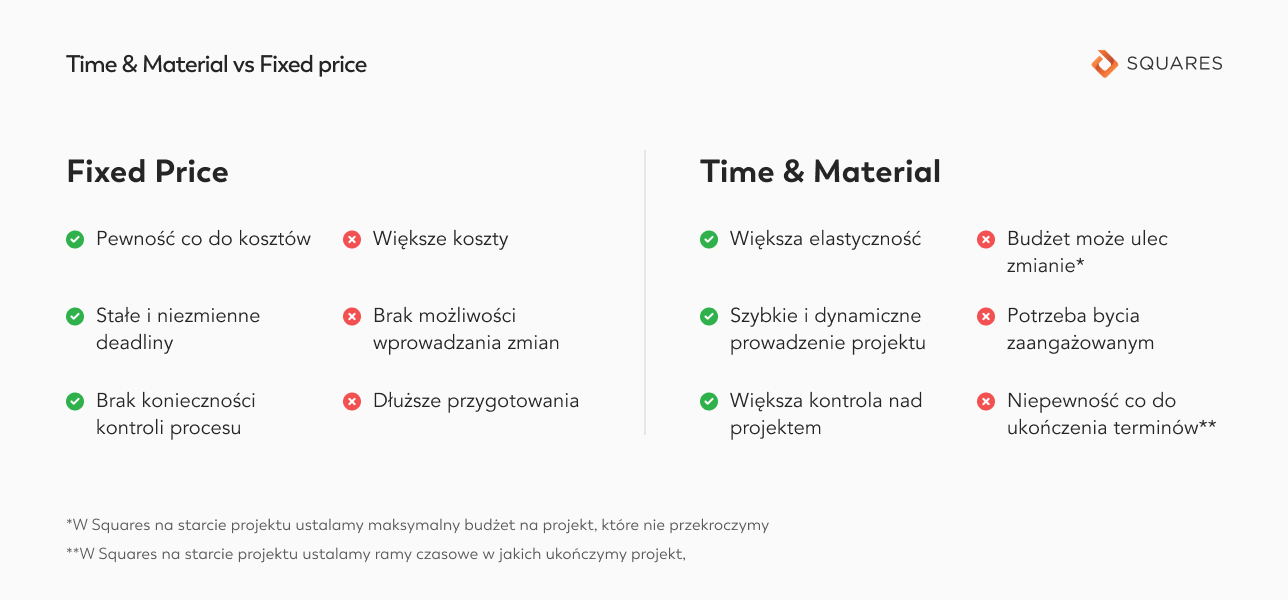Time & Material or Fixed Price — What to Choose?

In the technology industry, various billing methods are used for project execution. The most popular among them are Fixed Price and Time & Material, but the hybrid model—T&M With CAP—is also becoming increasingly common. Let’s take a closer look at these three models, their advantages, disadvantages, and the situations in which they work best.

Fixed Price – Is a Fixed Price the Best Choice?
The “Fixed Price” payment method involves setting a price for the entire project upfront. This rate is estimated based on a detailed work schedule and the assumptions that the project must meet. It may seem like a safe and good option for both the client and the agency; however, in many cases, it can prove to be unsuitable.
For smaller projects that do not require extensive planning over several months, this solution can be effective. The project does not need constant oversight since clear deadlines are defined at the outset, which means there is no need for a dedicated project manager. An agency offering projects using this model can consistently price its services the same way.
Typically, when using a fixed price model, agencies factor in a budget buffer during their estimates. This is intended to minimize the risk of losses due to unforeseen costs. However, this means that clients often do not pay the lowest possible price for the project.
Unfortunately, this pricing model also has its drawbacks. Preparation for a project under a fixed price requires a detailed specification to be determined from the start. Therefore, potential changes during the planning phase can lead to additional costs, as any modifications to the schedule or specifications involve contract amendments, which can be very time-consuming.
Moreover, at the beginning of the project, both the client and the agency may not foresee whether some functions will turn out to be unnecessary in the future and if it would be better to replace them with others. In the case of a “fixed price,” such modifications not only take a lot of time but are often associated with additional costs.

Time & Material – An Flexible Billing Model
Unlike a fixed price, in this case, the client pays exactly for what they ultimately receive, taking into account the hours worked by specialists and the materials used. This makes the contract form significantly more flexible. There is no requirement to create a very detailed product specification and action schedule, which helps reduce costs compared to a predetermined or fixed price.
In this model, billing usually occurs after completing specific milestones, allowing for a summary of what has been created and whether the project is staying within budget.
One advantage of this approach is the quick start to work and constant communication with the client, with whom the product is co-created. The flexible contract allows for rapid changes and modifications during the development process. Another benefit is the openness and transparency: based on the materials consumed and hours worked, the client knows exactly what they are paying for.
However, this model does have some drawbacks, one of which is the potential for project timelines to stretch. When the client continuously adds new features and imposes changes, a three-month project can extend to six months. During this time, the client must be engaged in the process, monitor costs to ensure they don’t exceed the budget, and be aware that the price isn’t fixed upfront—so it may increase.

Time & Material with CAP – Flexibility and Budget Security
T&M with CAP is a hybrid billing model that combines the flexibility of Time & Material with the cost control characteristic of Fixed Price. In this approach, the client pays for the actual hours worked and resources used, but a cap (CAP) is set for the total project costs.
The main advantage of this model is the ability to flexibly respond to changes in the project while also safeguarding against uncontrolled cost increases. The client is assured that the budget will not exceed the established limit, which facilitates financial planning.
T&M with CAP is particularly effective in medium-sized projects where there is a certain level of uncertainty regarding the final scope of work. It allows the project to start without needing to define all elements in detail, while also providing a sense of financial security.
However, it is important to remember that this model requires careful monitoring of progress and costs. When the project approaches the established limit, there may be pressure to reduce the scope of work or the need to renegotiate terms. Additionally, determining the appropriate CAP can be a challenge—setting it too low may limit project development opportunities, while setting it too high may fail to serve its purpose in controlling costs.
In summary, T&M with CAP offers a good balance between flexibility and cost control, making it an attractive option for many technology projects.
Time & Material, Time & Material with CAP, or Fixed Price?
Both methods have their strengths and weaknesses, but in the case of designing websites and applications, the Time & Material (T&M) solution is more cost-effective for both the client and the software company.
It allows for great flexibility and modifications during the work on the product, which, thanks to the client’s involvement, is exactly what they expected. Additionally, they have insight into costs, allowing them to monitor the budget in real-time.


